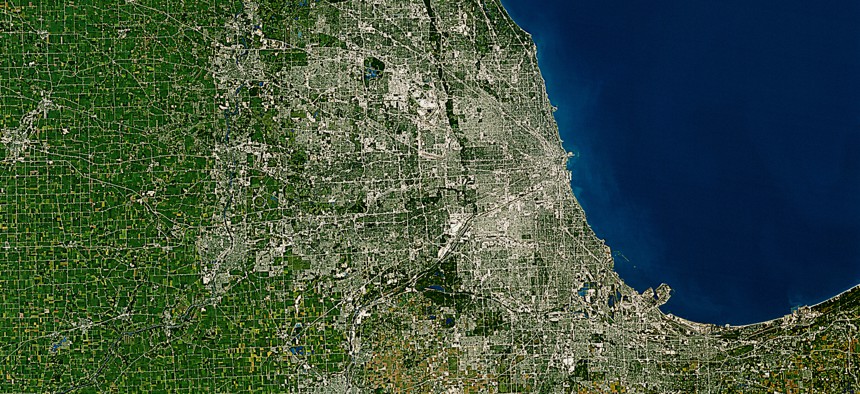Algorithm predicts racial segregation in cities

Satellite image of Chicago GettyImages/ Image Makers
The machine learning algorithm interprets the changes in the decade between censuses and makes predictions about residential segregation.
Researchers at the University of Cincinnati created a machine-learning algorithm that they say predicts segregation changes in neighborhoods.
Using data from the 1990, 2000, 2010 and 2020 census, they mapped the racial composition in 300-meter blocks, or cells, and examined the relationships among nearby cells. They trained their algorithm to interpret the changes in the decade between censuses and make predictions about residential segregation in 2030.
“Our hypothesis that you can predict the class of a cell in 10 years based on the previous two classes and surrounding classes was correct,” geography professor Tomasz Stepinski told UC News. “It’s not perfect, but you can see it’s pretty good.”
The predictive maps could be useful for policymakers, city planners and school districts as they plan for future services delivery, such as housing, transit or Spanish-speaking teachers.
Stepinski validated his algorithm by comparing its predictions to actual data from the 2010 and 2020 censuses and found it was up to 86% accurate. He then worked with Anna Dmowska of Adam Mickiewicz University in Poland to apply the algorithm to Chicago’s Cook County, Illinois, considered one of most racially segregated places in America.
The researchers found that many predominantly white or Black neighborhoods will become less segregated by 2030, but changes in neighborhoods dominated by Hispanic and Asian Americans will be less noticeable.
Cook County provides a good model for the algorithm, Stepinski said, because the expansive, heavily populated county still has many segregated neighborhoods despite moves toward greater racial and ethnic diversity.
If younger generations remain in the area, they often settle in nearby neighborhoods, the researchers said.
“It’s diffusion,” Stepinski said. “So in Cook County you have a Hispanic population that is growing faster than the white population. They’re going to move close by. They’re not going to move far from home.”
The researchers also applied the algorithm to Houston, Los Angeles and San Francisco with similar results.
The accuracy of the map indicates that segregation is not necessarily a matter of individual choice.
“Some people might choose to live in places where everyone looks like them,” said Michael Chavarria, executive director of the nonprofit HOPE Fair Housing Center in Illinois. “But the idea that an algorithm can predict where people live shows there are other factors that control these decisions. That tells me that the choice about where we live isn’t rooted in full agency.”
It’s important that policies keep with changing demographics to ensure equal opportunities to everyone, especially when it comes to housing discrimination or public services, said Olivia Cobbins, an investigator with the Cook County Human Rights Commission.
“Public officials and society have a moral responsibility and obligation to provide justice, equality and equity and to ensure public assistance and decent, affordable housing is available to those in need.”
NEXT STORY: ShotSpotter tech takes a hit






